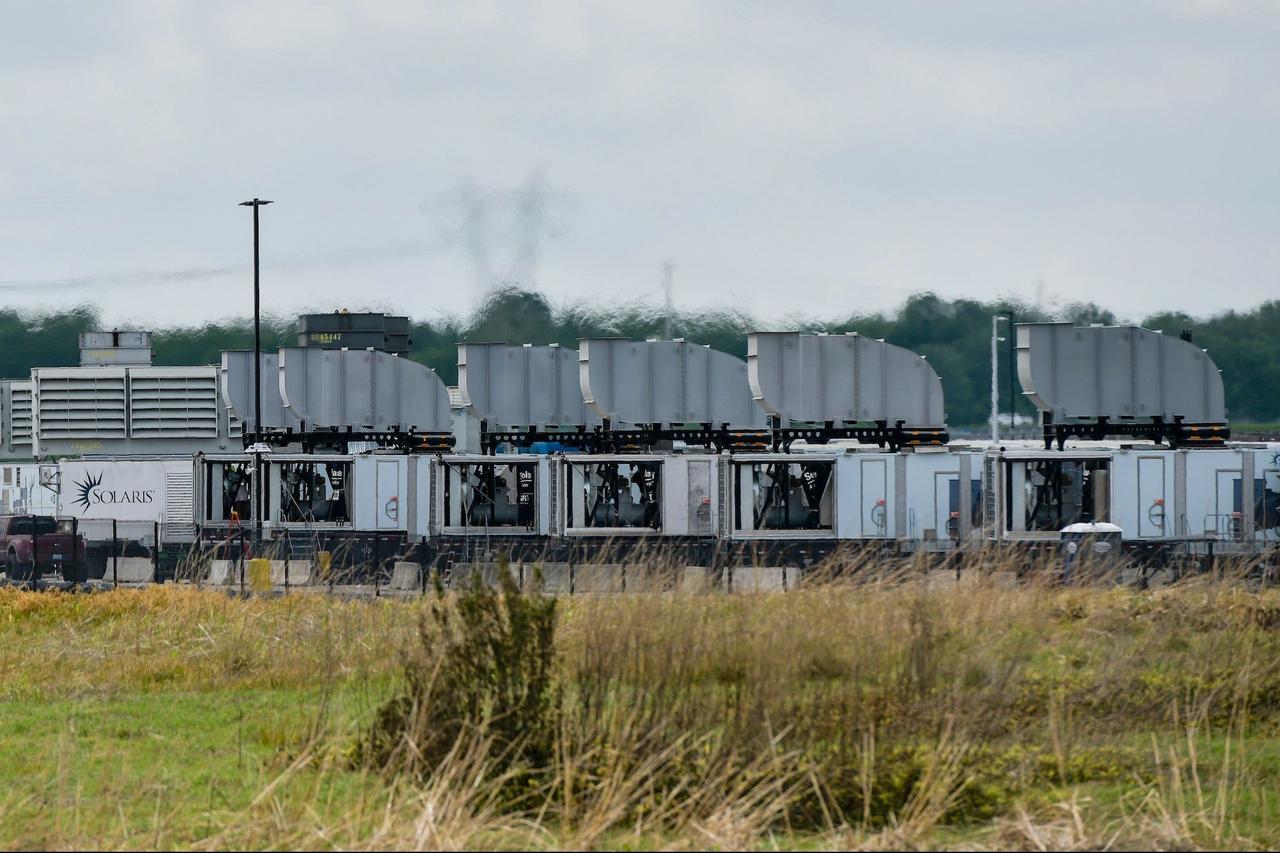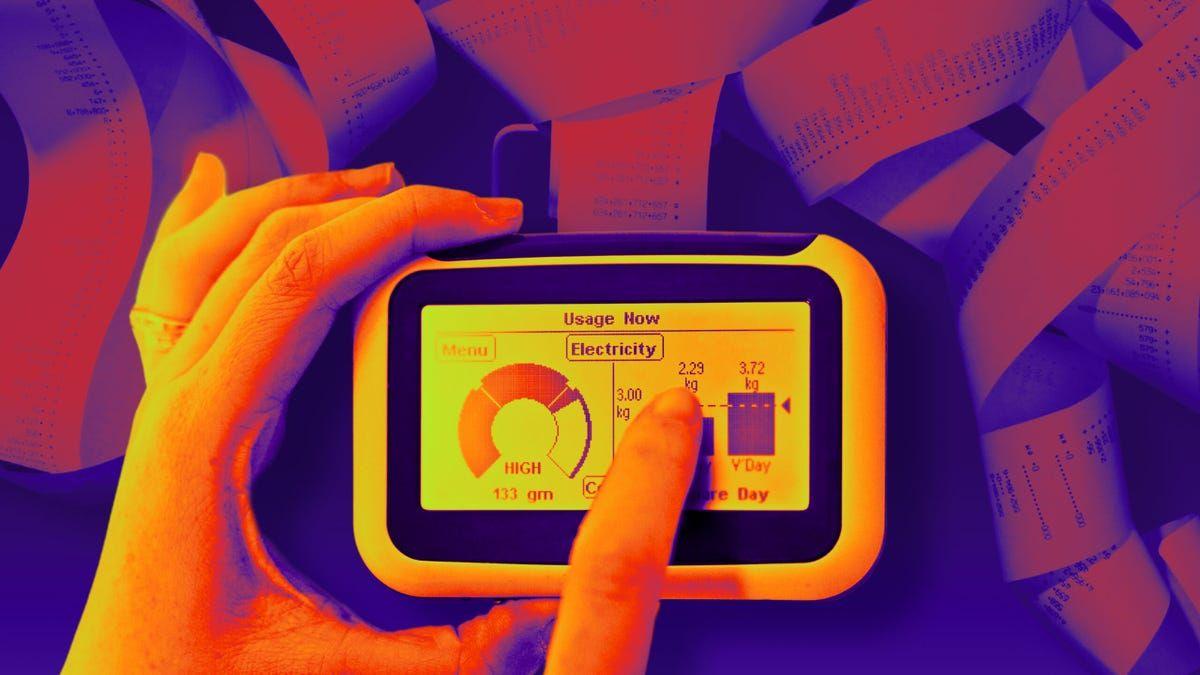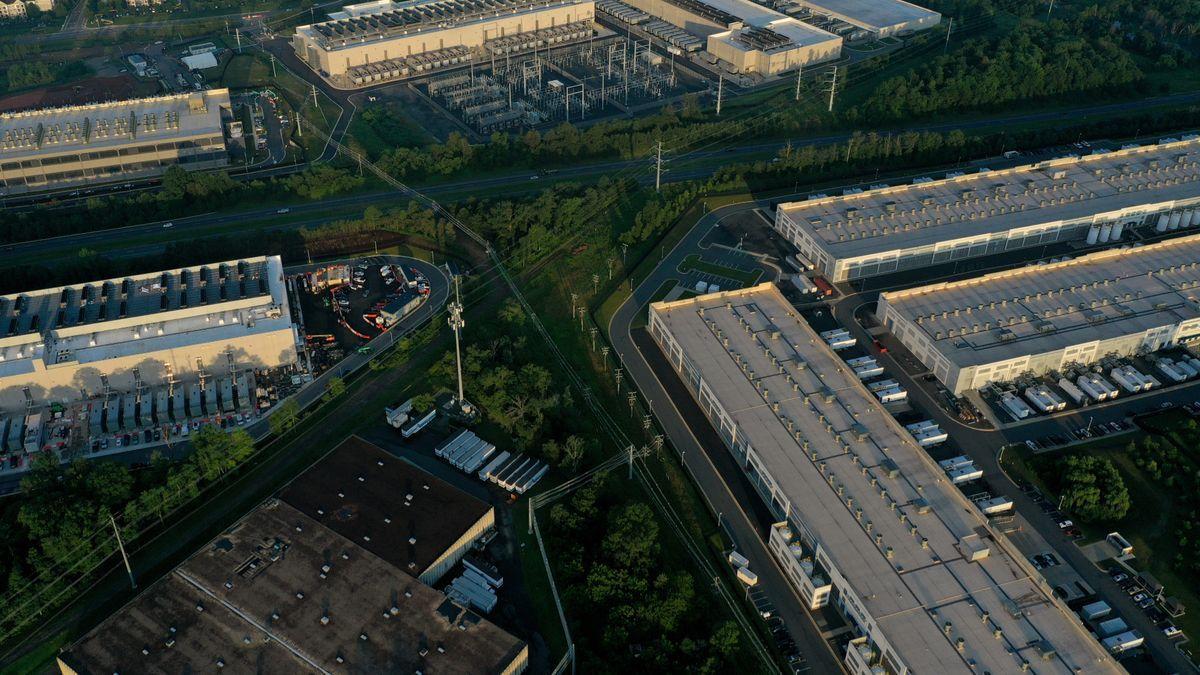AI's Energy Appetite: How Data Centers Are Driving Up Electricity Costs for Consumers
2 Sources
2 Sources
[1]
The AI revolution is likely to drive up your electricity bill. Here's why.
Alain Sherter is a senior managing editor with CBS News. He covers business, economics, money and workplace issues for CBS MoneyWatch. New Jersey residents got some bad news earlier this year when the state's public utilities board warned that their electricity bills could surge up to 20% starting on June 1. A key driver in that rate hike: data centers. The spread of these large-scale computing facilities across the U.S. amid growing demand for artificial intelligence, data storage and other technology services is projected to increase electricity consumption to record highs in the coming years, according to experts. A report from Schneider Electric, a company that specializes in digital automation and energy management, projects that electricity demand will increase 16% by 2029, mainly due to the proliferation of data centers. Most data centers rely on the nation's electrical grid for energy, meaning it will be Americans ratepayers who pick up the tab, Mark Wolfe, executive director of the National Energy Assistance Directors Association, a group that represents states on energy issues. "As utilities race to meet skyrocketing demand from AI and cloud computing, they're building new infrastructure and raising rates, often without transparency or public input," he told CBS MoneyWatch in an email. "That means higher electricity bills for everyday households, while tech companies benefit from sweetheart deals behind closed doors." Thousands of data centers now dot the country, with the largest concentrations in Virginia, California and Texas. The number of data centers in the U.S. nearly doubled between 2021 and 2024, according to a report from Environment America, a network of environmental groups. It's not just the number of data centers that are expected to rise, but the size. "The trend has been bigger data centers," Dave Turk, the former deputy secretary of the U.S. Department of Energy, told CBS MoneyWatch. "They tend to be more energy efficient." Spurring that expansion is the rapid growth of "generative" AI companies that are consuming vast amounts of electricity to train so-called Large Language Models like ChatGPT and power. AI searches use 10 times more electricity than normal internet searches, according to a study from the Electric Power Research Institute, a nonprofit organization. "AI is an increasing part of data centers and certainly responsible for increased electricity demand," Turk said. Data centers, which contain thousands of computer servers, networking gear and other infrastructure, also require power to cool their systems and keep them from overheating. Torsten Sløk, chief economist at asset management firm Apollo Global Management, estimates that data centers will require an additional 18 gigawatts of power capacity by 2030. To put that into context, New York City power demand is about 6 gigawatts. About 4.4% of U.S. electricity went to power data centers in 2023, according to a Department of Energy's Lawrence Berkeley National Laboratory study. Not all of that demand is related to AI, but it represents a portion, Turk said. The spread of data centers isn't the only reason U.S. electricity prices are surging. The price of natural gas, inflation, ongoing electrification of buildings and vehicles, and other factors also play an important role. But utilities are factoring the high demand from data centers into their pricing models. For example, when Dominion Energy, one of the Virginia's largest utilities, in April proposed a price hike of $8.51 per month in 2026, the company also floated the idea of a "new rate class for high energy users, including data centers." Electricity prices have risen 4.5% in the last year, according to recent data from the Labor Department, and are estimated to surge this summer. Energy costs also drift higher if a Republican-backed budget package, dubbed the "big beautiful bill," is passed and signed into law by President Trump. Analysts from Rhodium Group predict that the bill, which would repeal a slate of tax credits created under the Inflation Reduction Act, could increase a family's energy expenditures by nearly $400 a year. Beyond price increases, the heightened energy demand from data centers could also compromise the reliability of the grid, according to experts. In a recent report, the North American Electric Reliability Corp said that facilities that service AI and cryptocurrency companies are being developed at a faster pace than the power plants and transmission lines to support them, "resulting in lower system stability. PJM, a grid operator in 13 states plus Washington, D.C., cited data center demand as one of the factors that could lead to capacity shortages in its 2025 forecast.
[2]
Your Electricity Bill Is Going Up Thanks to AI -- Even If You've Never Used ChatGPT: 'Higher Bills for Everyday Households'
Is your electric bill higher than normal? Sure, it's summer in the U.S., and a higher bill due to air conditioning costs can be expected. In fact, CBS reports that electricity prices have risen 4.5% in the last year, according to recent data from the Labor Department. But what about a higher bill due to AI? It's happening to electric customers across the country, even if they've never asked a chatbot a question. Related: Saying 'Please' and 'Thank You' to ChatGPT Costs OpenAI 'Tens of Millions of Dollars' Customers in New Jersey, for example, are fuming over the news that their electric bills could surge up to 20% this summer due to data centers, per a new report in the local Patch outlet. But the entire U.S. could soon be affected. Floodlight reports that the way electric companies currently set rates won't work with the unprecedented demand Big Tech has with AI, and highlights a report from Harvard's Electricity Law Initiative that said, unless the current system changes, U.S. consumers will be the ones who pay "billions of dollars" for it. Mark Wolfe, executive director of the National Energy Assistance Directors Association, told CBS MoneyWatch the same -- that the American taxpayers will be the ones footing the bill -- not the AI companies. "As utilities race to meet skyrocketing demand from AI and cloud computing, they're building new infrastructure and raising rates, often without transparency or public input," Wolfe said. "That means higher electricity bills for everyday households, while tech companies benefit from sweetheart deals behind closed doors." Related: Excess Energy from AI Servers Is Heating the Pool at the 2024 Olympic Games -- Here's How Digital automation company, Schneider Electric, found that electricity demand will increase at least 16% in the U.S. by 2029 due to data centers. This is only expected to grow as the number of data centers also grows (it already doubled in the U.S. between 2021 and 2024, per a report from Environment America). And the number is increasing with generative AI and other technological advances. Meanwhile, the rise in electricity needs could result in "lower system stability," according to a recent report by the North American Electric Reliability Corp., and a grid operator in 13 states and Washington, D.C., PJM, said data center demand could lead to "capacity shortages" in its 2025 forecast.
Share
Share
Copy Link
The rapid growth of AI and data centers is leading to increased electricity demand and higher bills for consumers across the United States, raising concerns about grid stability and energy costs.
The Rising Tide of AI Energy Consumption
The artificial intelligence revolution is reshaping more than just technology – it's also set to have a significant impact on your electricity bill. As data centers proliferate across the United States to meet the growing demand for AI, cloud computing, and data storage, experts project a substantial increase in electricity consumption in the coming years
1
.Schneider Electric, a company specializing in digital automation and energy management, forecasts a 16% increase in electricity demand by 2029, primarily due to the expansion of data centers
1
. This surge in energy consumption is not just a matter of increased usage; it's also driving up costs for everyday consumers.The Data Center Boom

Source: CBS
The number of data centers in the U.S. has nearly doubled between 2021 and 2024, according to a report from Environment America
1
. These facilities, which house thousands of computer servers and networking equipment, require enormous amounts of power not only to run but also to cool their systems and prevent overheating.The growth of "generative" AI companies is a key factor in this expansion. Training large language models like ChatGPT and powering AI searches consumes significantly more electricity than traditional internet searches – up to 10 times more, according to a study from the Electric Power Research Institute
1
.Impact on Consumer Electricity Bills
The increased demand from data centers is already affecting electricity prices across the country. In New Jersey, for example, residents were warned of a potential 20% surge in their electricity bills starting June 1, with data centers cited as a key driver of the rate hike
1
2
.Mark Wolfe, executive director of the National Energy Assistance Directors Association, warns that utilities are raising rates to meet the skyrocketing demand from AI and cloud computing, often without transparency or public input. This results in higher electricity bills for everyday households, while tech companies potentially benefit from preferential deals
1
2
.Grid Stability Concerns

Source: Entrepreneur
Beyond price increases, the heightened energy demand from data centers could also compromise the reliability of the power grid. The North American Electric Reliability Corp has reported that AI and cryptocurrency facilities are being developed at a faster pace than the power plants and transmission lines needed to support them, potentially resulting in lower system stability
1
.PJM, a grid operator serving 13 states and Washington, D.C., has cited data center demand as one of the factors that could lead to capacity shortages in its 2025 forecast
1
2
.Related Stories
The Scale of the Challenge
To put the scale of this challenge into perspective, Torsten Sløk, chief economist at Apollo Global Management, estimates that data centers will require an additional 18 gigawatts of power capacity by 2030. For context, New York City's power demand is about 6 gigawatts
1
.Looking Ahead
As the AI revolution continues to unfold, it's clear that its energy implications will be far-reaching. While data centers are not the sole reason for rising electricity prices – factors such as natural gas prices, inflation, and the electrification of buildings and vehicles also play a role – they are becoming an increasingly significant factor
1
.The challenge moving forward will be balancing the technological advancements offered by AI with the need for sustainable and affordable energy solutions. As consumers face the prospect of higher bills, there is a growing call for more transparency and public input in how utilities manage this increased demand and set their rates
2
.References
Summarized by
Navi
Related Stories
AI Boom Drives Up Utility Bills: The Hidden Cost of Technological Progress
18 Oct 2025•Business and Economy

Trump's AI Push Clashes with Clean Energy Cuts, Raising Concerns Over Data Center Boom and Electricity Costs
24 Jul 2025•Policy and Regulation

AI Data Centers Spark Surge in Electricity Costs for Consumers
30 Sept 2025•Business and Economy








